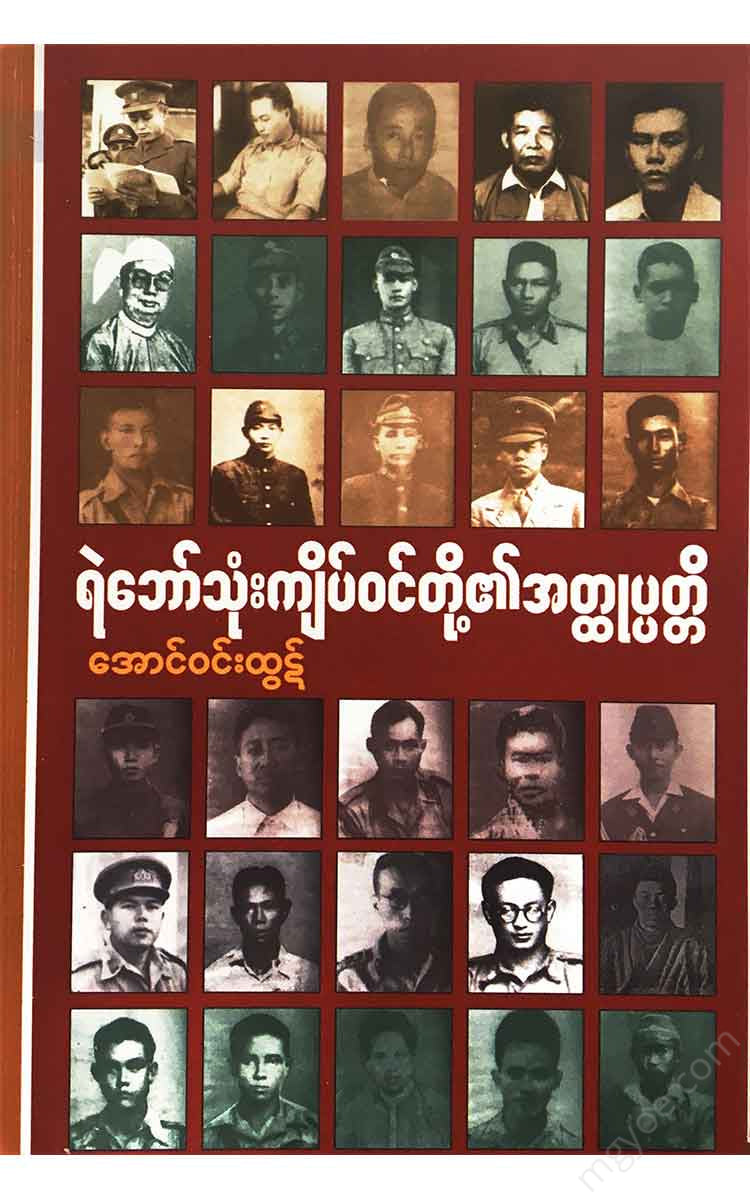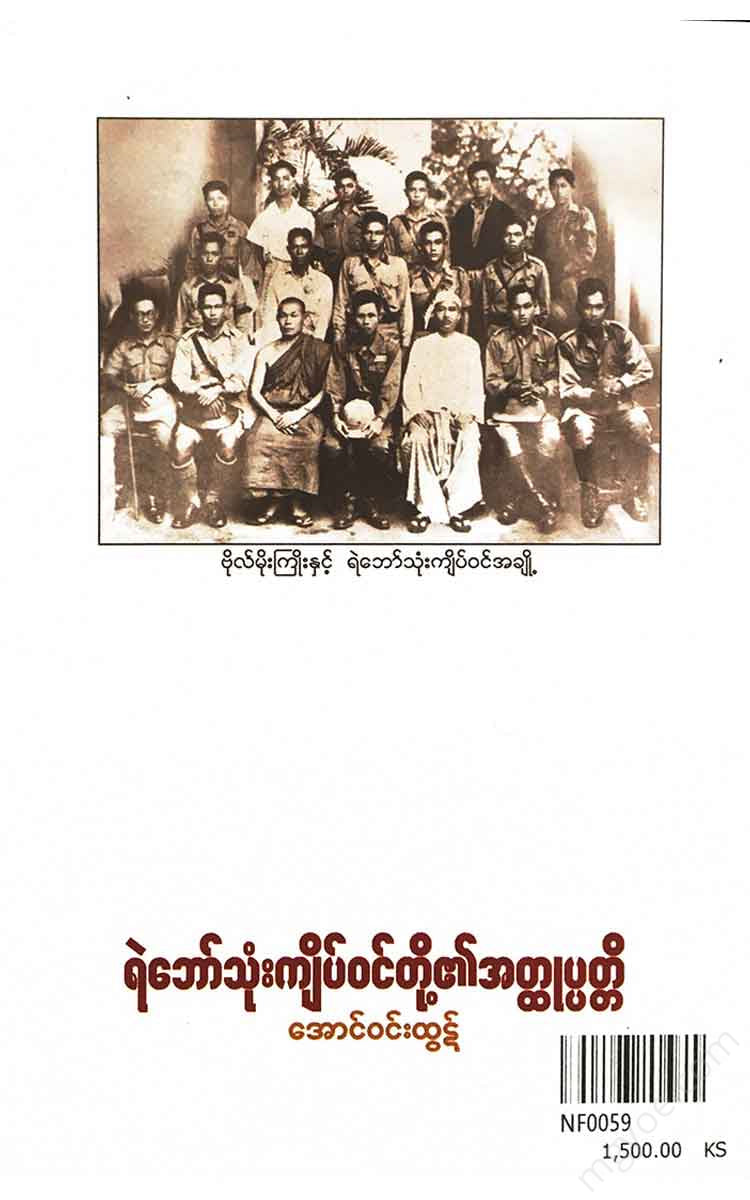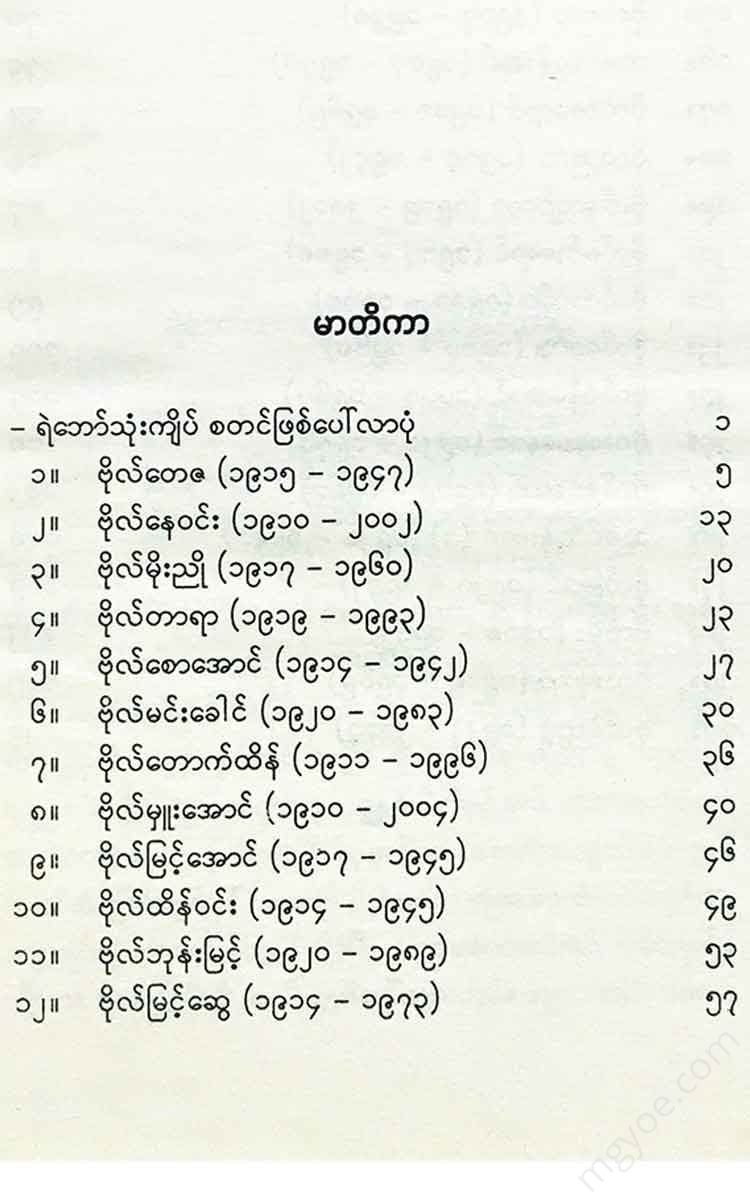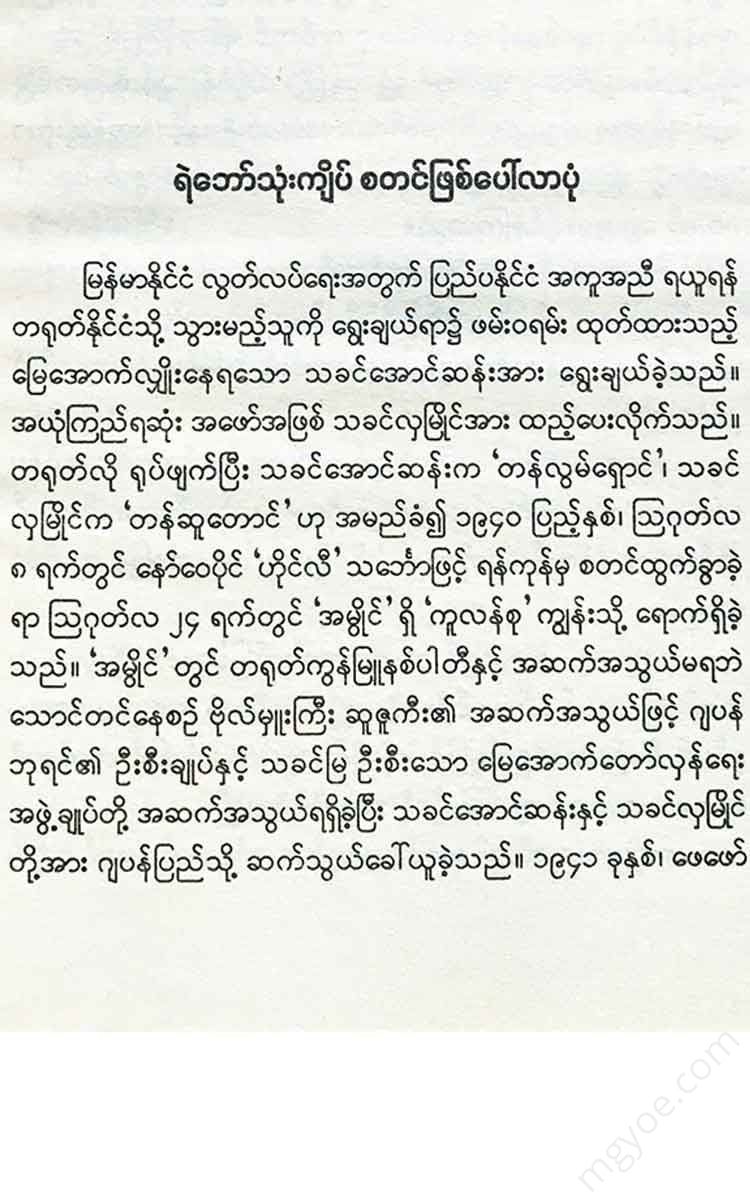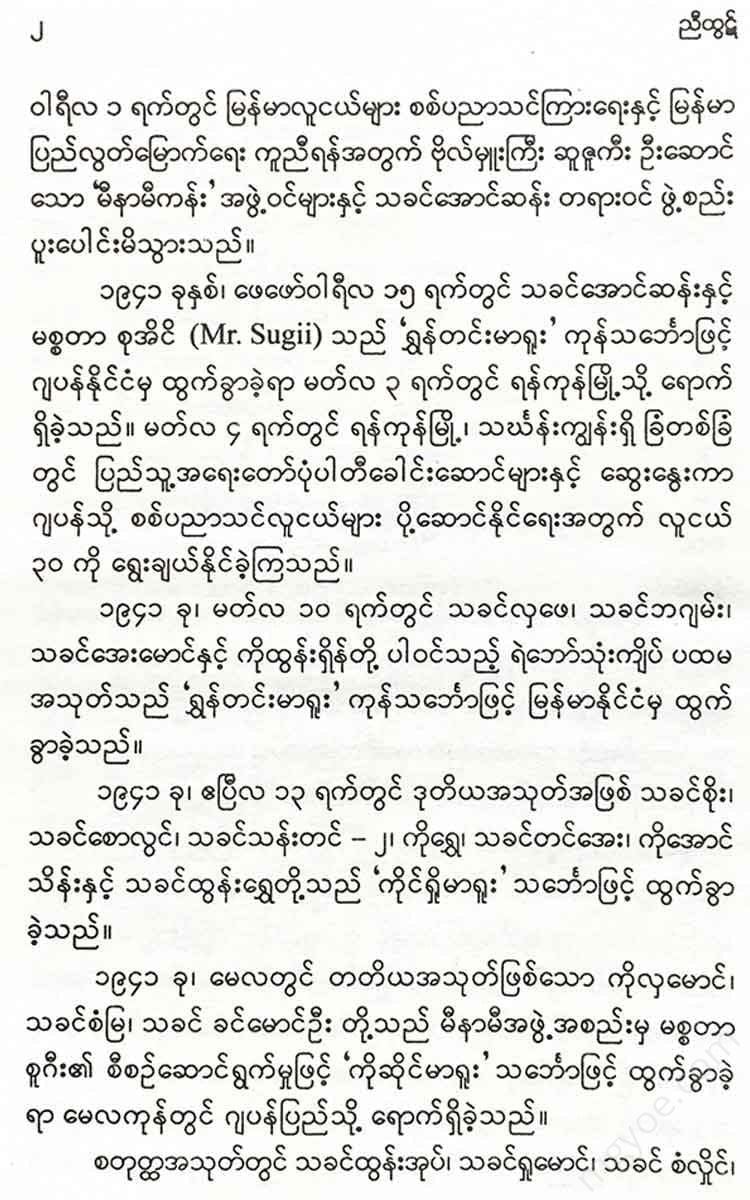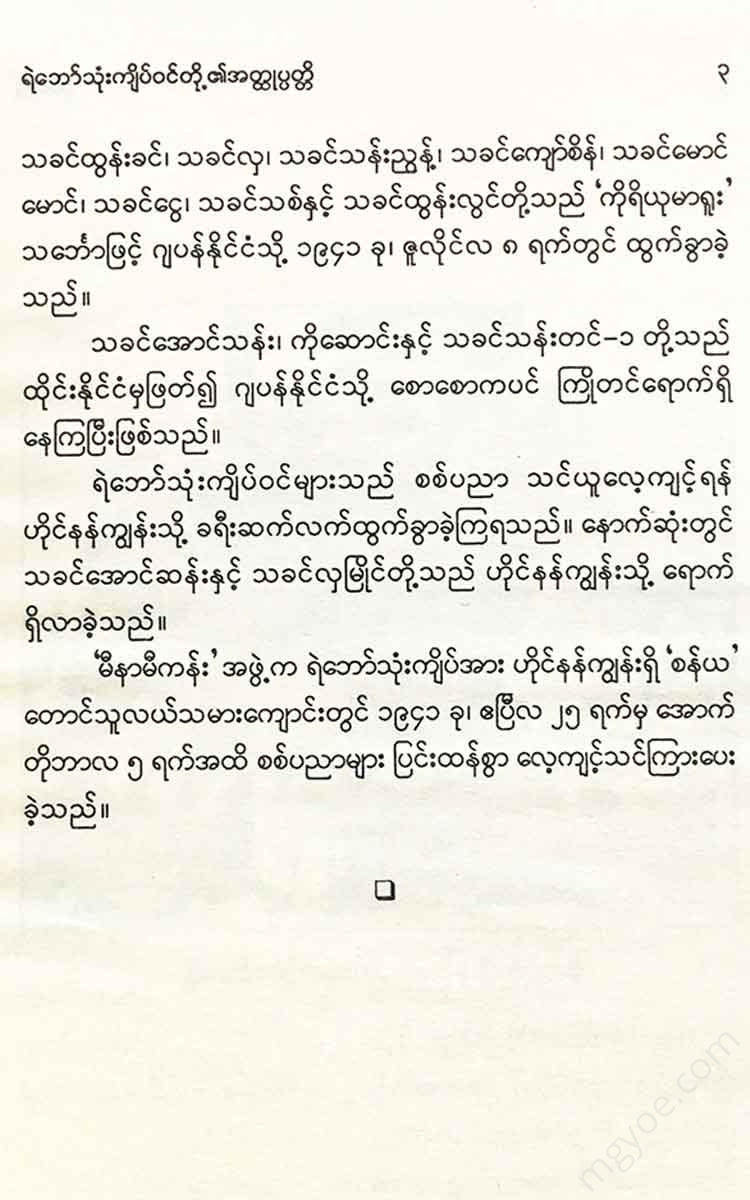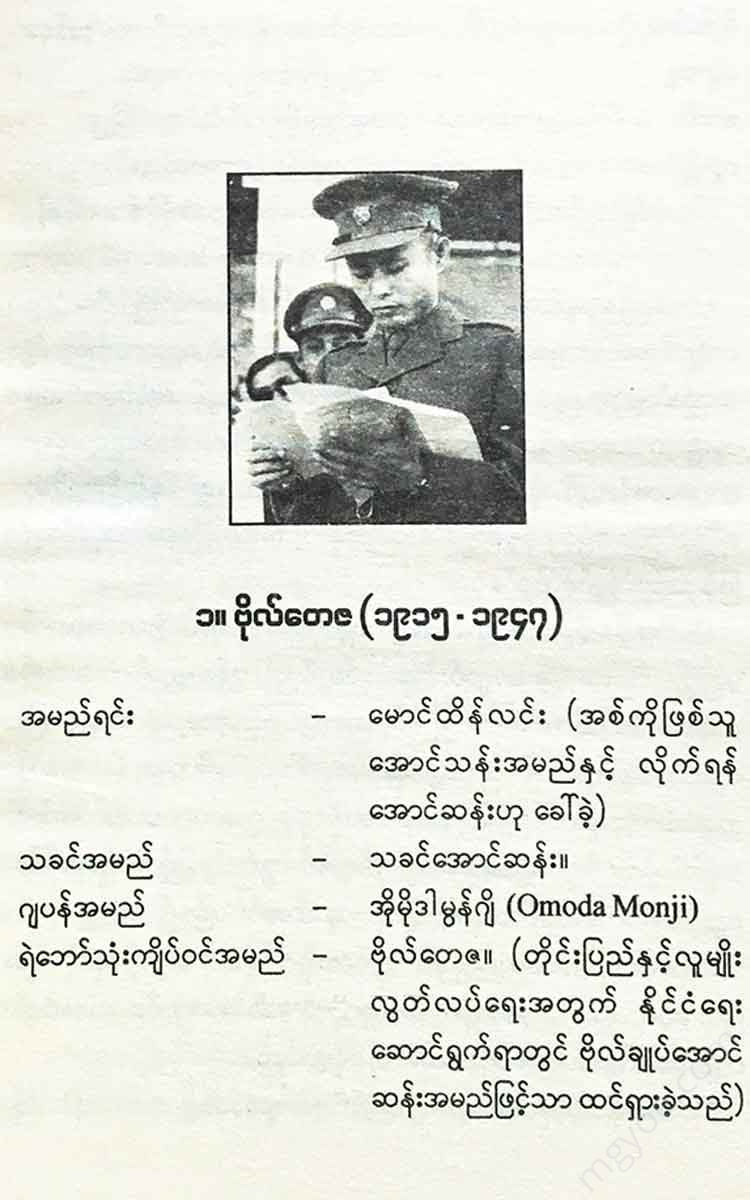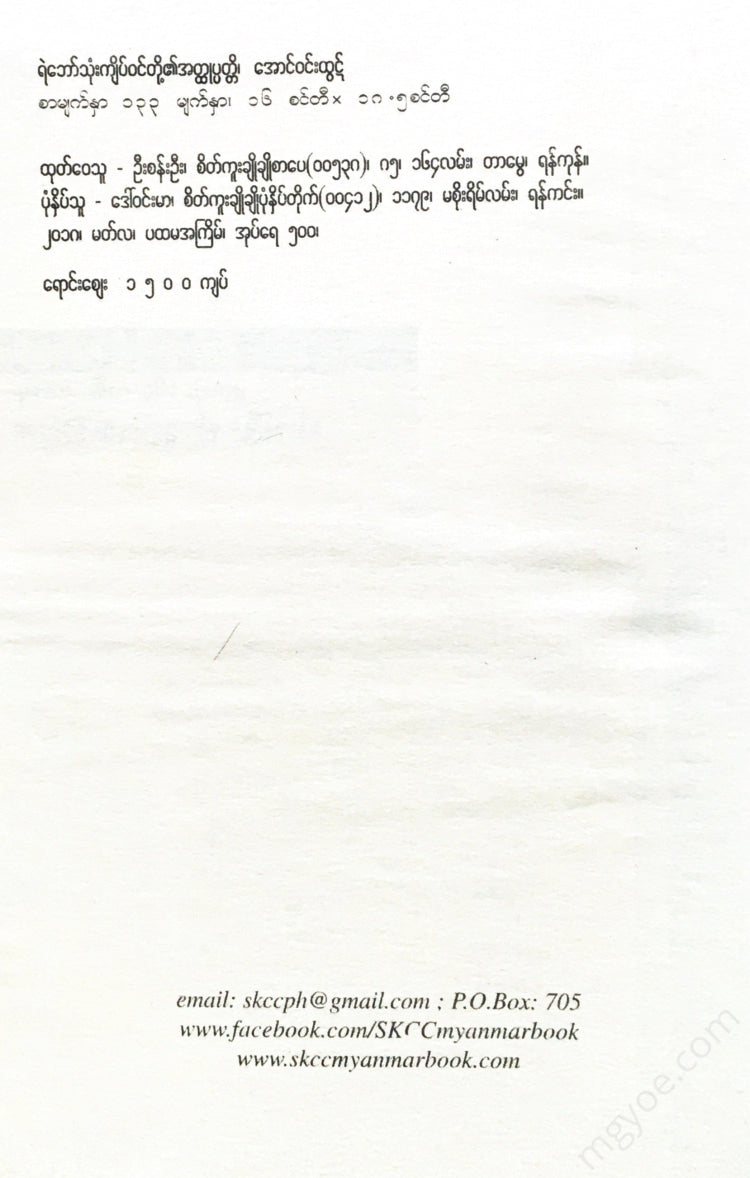စိတ်ကူးချိုချိုစာပေ
Aung Win Htut - Biography of the Thirty Comrades
Aung Win Htut - Biography of the Thirty Comrades
Couldn't load pickup availability
Brother Htut
Parents' names: U Pha, a third-class lawyer, Daw Suu Kyi.
Birthday : Saturday, February 13, 1915.
Birthplace : Natmauk Town, Magway District.
Ethnicity - Burmese, Buddhist
He is the youngest of nine siblings.)
In 1922, at the age of seven, he studied at Sayadaw U Thawbita Kyaung, also known as Dipinkara Kyaung, in Natmauk. In 1928, at the age of 13, he continued his education at the National High School in Yenangyaung, where he received a government scholarship and the U Shwe Kho Award in the seventh grade. In 1932, he passed the tenth grade with honors in Pali and Burmese.
He attended Rangoon University in the 1932-33 academic year and, as a student, joined the Rangoon University Volunteer Army and received military training. In the 1935-36 academic year, he served as an executive member of the Rangoon University Students' Union (RUSU), information officer, and editor of Oh Wai Magazine. He was suspended for three years by the university authorities in March 1936 for not revealing the author of the article "The Great Dog of Hell is Free" in Oh Wai Magazine. That year, he participated in the second student strike at Rangoon University as a leader.
He was among the founders of the All Burma Students' Union (ABSU). He was allowed to return to school after the second student strike.
In the academic year 1936-37, he served as the Vice-President of the Rangoon University Students' Union (RUSU), as an executive of the All Burma Students' Union (ABSU), and as the President of the Bago Saung Sahayya (Friendship) and Reading Society. In May 1937, he received his Bachelor of Arts degree from Rangoon University and in June, he was a member of the Rangoon University Act Amendment Committee formed by the ABSU.
In the academic year 1937-38, he continued to study law at the University of Rangoon and served as the deputy executive member of the TAK and the president of the BKA. In 1938, he was appointed as a member of the Rangoon University Act Amendment Committee. In the academic year 1938-39, he served as the president of the TAK and the BKA. In August 1938, he resigned from the University of Rangoon and in October, he joined the Burmese Association of Thakin Thaung Ming and Thakin Mya, and took the name of Thakin and was responsible for propaganda as a member of the executive committee of the headquarters. On November 3, he resigned as the president of the TAK and the BKA. On November 26, he became the general secretary of the Burmese Association.
He was arrested by the British government on 3 January 1939 for his support of the 1300th Uprising and released on bail on 7 February. He was re-elected as General Secretary at the Fourth Conference of the Burma Association held in Mawlamyine from 6 to 9 February of that year. On 13 August, he participated in the formation of a communist cell within the Burma Association, and on 15 August, he served as Secretary in the secret formation of the Communist Party of Burma as a grassroots party. On 1 October, he served as General Secretary in the formation of the Burma Liberation Front, which included all those who loved the independence of Burma. On 18 November, he served as the head of foreign relations in the formation of an underground secret group.
He attended the Indian National Congress held in Ramgarh, Hazaribagh district, Bihar, India, from March 19 to 20, 1940. On June 1, he was fined 5 kyats for preaching against the government in Jalun, Hintha district. (The fine was paid on June 29.) On June 5, the university students elected him as the first Rangoon University student representative to the Rangoon University Governing Body.
Thakin Aung San decided to leave the country and seek foreign help, not wanting to be arrested by the British government.
Disguised as Chinese to contact the Chinese Communist Party, Thakin Aung San assumed the name "Tan Luang Xiao" and Thakin Hla Myaing assumed the name "Tan Su Taung" and departed from Rangoon on August 8, 1940 on the Norwegian-owned ship Hai Li. (The order to issue a reward of 5 kyats was revoked on August 20.) On August 24, he arrived at "Kulang Su" island in Amoy. While stranded in Amoy without being able to contact the Chinese Communist Party, Colonel Suzuki of the Japanese Army contacted him and he arrived in Japan on November 12.
On March 3, 1941, he returned to Rangoon and discussed the Burmese independence process with the members of the People's Liberation Army. On March 10, he took the first batch of Thirty Comrades back to Japan, arriving in Tokyo on March 27. From there, he went to Hainan Island in April to study military science, and taught military science in Hainan Island and Taiwan. Then, he took the oath of allegiance in Bangkok, Thailand, and formed the Burma Independence Army (BIA) on December 27. He served as the second-in-command of the BIA headquarters and the Mawlamyine line, and marched into Burma to fight the British.
On March 8, 1942, the Japanese 215th Infantry Corps and the Burma Independence Army captured Rangoon. On July 27, the BIA was dissolved and the Burma Defense Army (BDA) was formed, with the rank of colonel as its commander. On September 6, he married Daw Khin Kyi, a nurse, daughter of U Phoe Hnyin and Daw Vuk Su from Myaungmya.
In March 1943, he was promoted to the rank of general and on March 11, at the invitation of the Japanese government, he went to Japan with Dr. Ba Maw, Dr. Thein Maung, and Thakin Mya. On March 22, he was awarded the Order of the Rising Sun (third class) and the Order of the Sword by Emperor Hirohito of Japan in Tokyo. When the Burmese government was formed on August 1, he served as the Minister of Defense (War Minister).
From August 4 to 7, 1944, he secretly met with Thakin Soe, a representative of the Communist Party of Burma, at the Burma Army Model Battalion and decided to form an Anti-Fascist Japanese Army. A meeting was called on August 23 to form an Anti-Fascist Army. On September 4, he was awarded the Order of the Noble Jewel (First Class) by Emperor Hirohito of Japan in Yangon.
From March 1 to 4, 1945, he planned to fight against the fascist Japanese at General Aung San's house on the corner of Kandawgyi Circle and U Myat Tun Street in Yangon. When the fascist Japanese revolution began on March 27, he took charge of the frontline command and fought against the fascist Japanese. On May 16, he met with British General Sir William Slynn in Meiktila. He served as the chairman of the Nay Pyi Taw Conference held on August 19 and formulated the Burmese independence agenda. In August, he was elected as the chairman of the Anti-Fascist League. On September 7, he signed the Kandy Agreement, and on October 27, he resigned from the position of General of the Burma Patriotic Army and returned to politics. On December 1, he took charge as the commander-in-chief and formed the People's Comrades Army.
He was re-elected as the President at the National Conference of the Federation of Myanmar held from 17 to 23 January 1936. On 26 September , at the invitation of Sir Hubert Rant, he joined the Executive Council of the Federation of Myanmar and served as its Vice-President, taking charge of the Departments of Defence and Foreign Affairs. On 8 November, he requested the British Government to grant Burma independence within a year.
In 1947, at the invitation of the British government, a Burmese delegation led by General Aung San traveled to London, England, and met on January 27.
Aung San-Atlee signed the Aung San-Atlee Accord. On February 12, he signed the Panglong Agreement (Panglong Agreement) with ethnic leaders. He ran as a candidate for the ARF in the Constituent Assembly elections held on April 9 and was elected unopposed. He chaired the ARF preliminary conference held at Jubilee Hall on May 19. On June 16, he submitted the basic principles to be included in the drafting of the Constitution of the Union of Myanmar to the Constituent Assembly.
While striving for independence, he was assassinated by the evildoers on July 19, 1947, at 10:35 a.m. in the Secretariat. (He was shot 13 times.)
General Aung San's body was transported from Jubilee Hall to Martyrs' Hill on April 11, 1948, and buried in a tomb.
On March 27, 1959, he was awarded the Independence Monument Medal (First Class) as a token of gratitude by the state for his selfless and life-sacrificing efforts for the independence of the country and the people in the final phase of Myanmar's struggle for independence.
